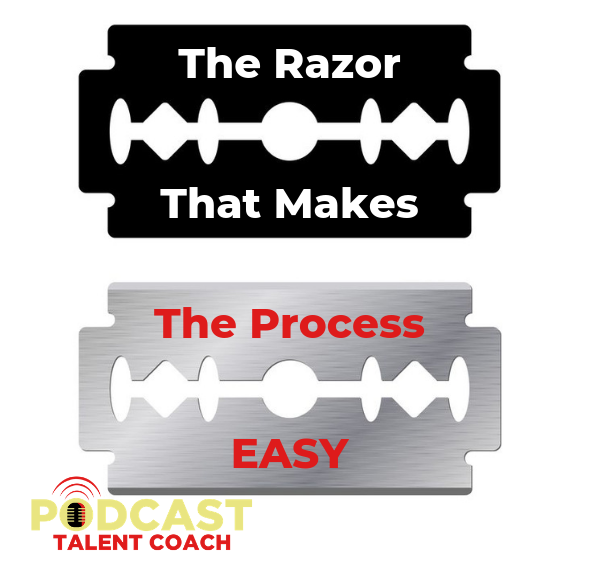Podcast: Play in new window | Download
Subscribe: RSS
You have probably heard the old saying, “Keep it simple stupid.” It is easy to understand yet difficult to implement. Let’s talk about your podcast process and how to make more progress quickly.
“Keep it simple stupid” is the shortened version of Occam’s Razor. It is also known as the law of parsimony.
Occam’s Razor is the problem-solving principle that states that “simpler solutions are more likely to be correct than complex ones”. When presented with competing hypothetical solutions to a problem, one should select the answer that makes the fewest assumptions. Select the simplest solution.
I wanted to create a workshop to help podcasters with their interviewing skills. As I searched for a way to structure the process, I was getting overwhelmed.
How do I get people signed up? How do I let them know they are signed up? How do I collect payment? How do I host it? Will the participants know how to use that platform? Should there be a pitch at the end or some sort of follow-up? Do they need to be added to my e-mail list?
There were all sorts of details and options. The more I searched the internet for solutions, the more solutions and options I found.
Finally, I decided to keep it simple. I created an invite using the Evite app with a fee to attend. I limited the number of attendees within the app. And I used Zoom to host the workshop. The two pieces of software integrated with my Paypal account. Done and done.
When it comes to refining your process, don’t make it harder than it needs to be. Get it done using the easiest solution and ship it.
Here are the 5 steps to refine your process.
1. SWIM DOWNSTREAM
Don’t fight what works. If you are having issues, you may be trying to go against the norm. Don’t reinvent the wheel.
2. PRIORITIZE
Make a list of “Must do” vs. “nice to do” tasks. Select the “must do” tasks and implement. Get it done by completing the “must do” tasks.
Done and shipped is better than perfect. A partial solution implemented 100% is typically better than a full solutions or perfect solution implemented 0%.
Ship and then refine. With implementation, you get information. With information, you can improve. Implement, test, improve and implement again.
3. DON’T OVERTHINK IT
This is where most of us fail. We think, “It can’t possibly be this easy.” Well, sometimes it is just this easy.
Find the path of least resistance and move forward.
4. MINIMAL VIABLE PRODUCT
When you are creating your podcast, take the shortest route to get it published. Do I need a mixer, mic processors, and other gear? Keep it simple. Start with a USB mic into your computer with some recording software. Create the .mp3 and post the show. You can add the bells and whistles down the road.
If you are creating a product to sell, use the MVP theory. MVP is Minimum Viable Product. This is a product with just enough features to satisfy early customers, and to provide feedback for future product development.
5. REFINE
Only refine after version 1.0 has shipped. Gather the feedback. Evaluate your “nice to do” list. Refine and ship again.
THE APPLE WAY
Think about Apple products. Steve Jobs hated buttonson his iPod and iPhones.
Steve Jobs had a love of simplicity. He was passionate to the point of obsessive about design. Jobs once said, “I love it when you can bring really great design and simple capability to something that doesn’t cost much … It was the original vision for Apple. That’s what we tried to do with the first Mac. That’s what we did with the iPod.”
Ease of use was also a big priority for Jobs. He wanted simplicity that made products intuitively easy to use. He wanted it obvious.
When developing the iPod, Jobs wanted to be able to get to a song in no more than 3 clicks. The click had to be intuitive. His primary demand to designers was “simplify”.
Developers fought to include the 4 buttons that made it to the phone. Those include the home button, the volume button, the sleep/power button and the mute switch. That’s it. Simplicity. Don’t make it overcomplicated.
SHIP
Move quickly and ship.
It isn’t a desire to fail. However, if you do not succeed, learn from it and move on quickly. Take failure seriously to avoid it in the future. Do everything you can to be successful. If you fail, dust yourself off, learn from it and move on to the next idea quickly. Improve and ship again.
You can find my podcast and other tools to help you create great content at www.PodcastTalentCoach.com.
Let’s turn your information into engaging entertainment.

